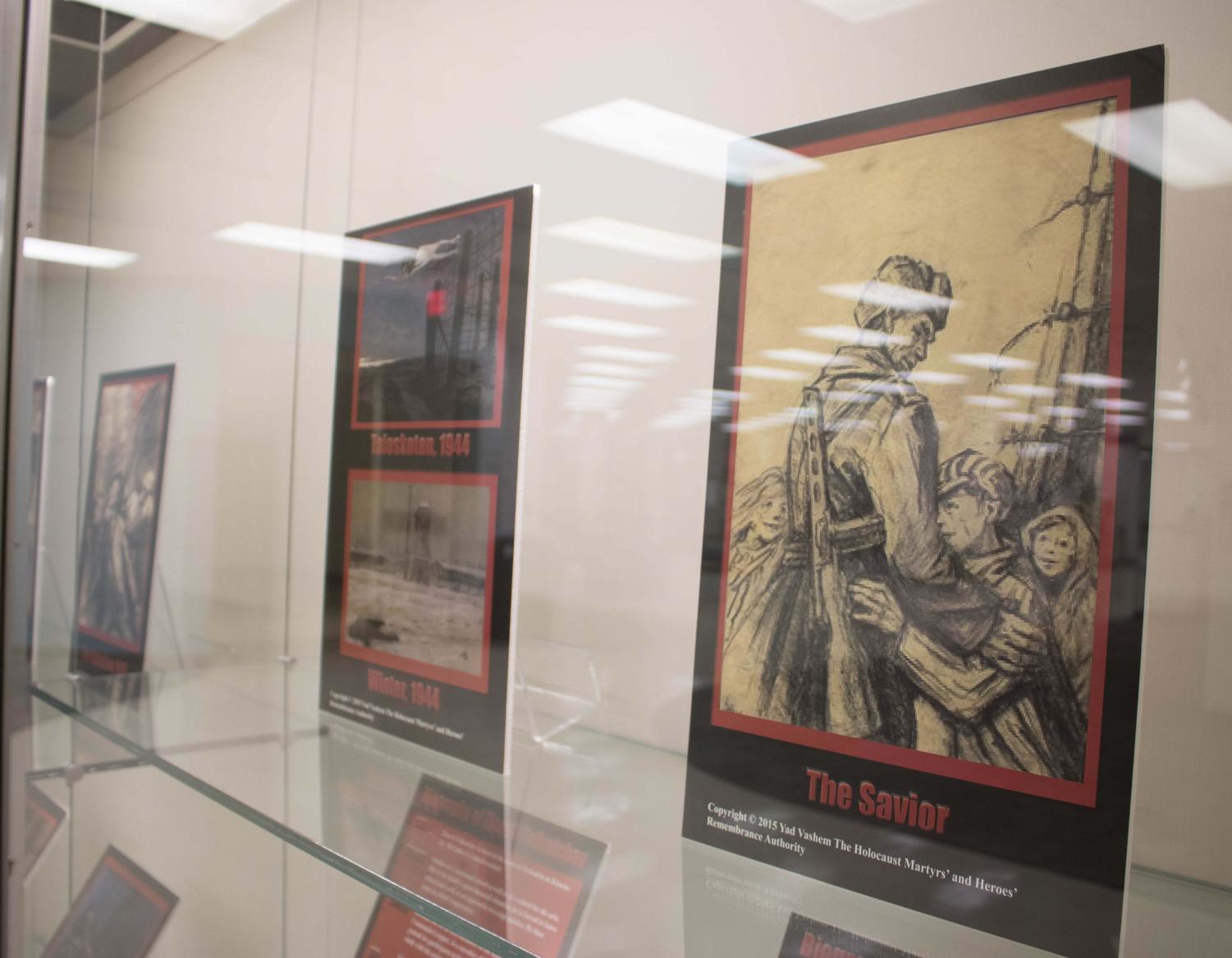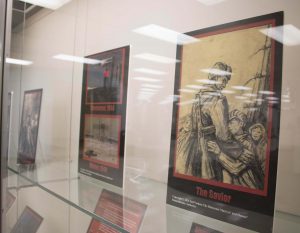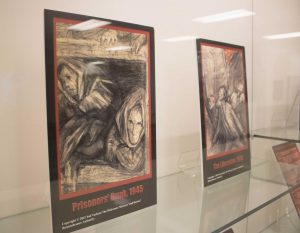Museum showcases Holocaust artist
Jan 25, 2018
A unique take on a grim moment in history is coming to UNI.
The UNI Center for Holocaust and Genocide Education is presenting an exhibit of private Zinovii Tolkatchev’s drawings of the liberation of Majdanek and Auschwitz-Birkenau concentration camps. The exhibit will be on Rod Library’s first floor from Jan. 22 until Feb. 1 to commemorate Holocaust Memorial Day.
UNI professor Stephen Gaies, director of the Center for Holocaust and Genocide Education, explained that Tolkatchev’s drawings are unique. They are reactionary to the liberation he saw, giving them a firsthand feel. Much of the documentation of the Holocaust came through film and photographs, so Tolkatchev’s use of charcoal and pencil was special.
“Tolkatchev was a strong believer in communism, and he was also Jewish,” Gaies said. “He witnessed crimes against his fellow Soviets and co-religionists. He deliberately didn’t portray anything related to the Germans, he focused on the survivors and his reactions,”
This focus was extremely personal.
According to Yad Vashem, the World Holocaust Center in Israel, Zinovii, Tolkatchev was born in Belarus. He studied at a vocational school, but his roots were with Komsomol, the Young Communist League. He was a revolutionary and participated in the Russian Civil War.
After the war, he studied art in Moscow. He joined The Workers’ and Peasants’ Red Army and served in the artillery. After this, he taught at the Institute of Fine Arts in Kiev, Ukraine. He had an exhibit in Kiev about the death of Vladimir Lenin, the Russian communist revolutionary. He also exhibited a series about shtetls, small towns with large Jewish populations before the Holocaust. He was the appointed as a professor at the Institute of Fine Arts in Kiev in 1940.
Tolkatchev joined the Red Army as an official artist in the Fall of 1944 to document war crimes. He accompanied soldiers to the liberation of Majdanek, a concentration camp in Lublin, Poland and Auschwtiz, in Owiecim, Poland. Most of this exhibit comes from the liberation of Auschwitz on Jan. 27, 1945.
These drawings include survivors and what the camp looked like. There are depictions of mothers with their children, a Russian soldier and a young child embracing and more. Upon arriving at the camp, Tolkatchev did not have paper to draw on. He ended up taking letterhead from Nazi offices, and they are still a part of his work.
According to Yad Vashem, Tolkatchev spoke of his drawings as saying: “I did what I had to do; I couldn’t refrain from doing it. My heart commanded, my conscience demanded, the hatred for fascism reigned.”
This passion was evident to Gaeis.
“Tolkatchev’s drawings capture the sense of artist being right there in the moment,” Gaies said.
The series of Auschwitz and Majdanek were published as “Majdanek” and “Flowers of Auschwitz.” They were published and spread throughout Poland. However, his art was declared defective by the government. Authorities denounced him, saying he was “the personification of detached cosmopolitanism and bourgeois nationalism,” according to Yad Vashem.
Consequently, this exhibit was not widely seen until Tolkatchev’s family members gave his work to Yad Vashem after Tolkatchev’s death in 1977. Yad Vashem digitalized the drawings. The exhibit at Rod Library uses printed images from this virtual exhibit. It also includes excerpts of what Tolkatchev wrote regarding the drawings and his biography.
The UNI Center for Holocaust and Genocide Education chose to highlight this artwork because of its distinctiveness, and in response to a lack of knowledge in the Western hemisphere.
“The history of WWII that took place behind the Iron Curtain was largely unknown until the early 1960s when the first trials took place in Germany,” Gaies said. “This exhibit showcases the heroism and perseverance of the Red Army and the survivors. It was published around the time of these trials.”
Gaies urges students to take the time to see the exhibit, but if students are unable, he noted that the drawings can be viewed online at the Yad Vashem website.
“Everyone will find a different drawing that strikes them in a particular way; it is hard to choose one favorite,” Gaies said.
The UNI Center for Holocaust and Genocide Education will be featuring an exhibit on the Syrian crisis this semester.











